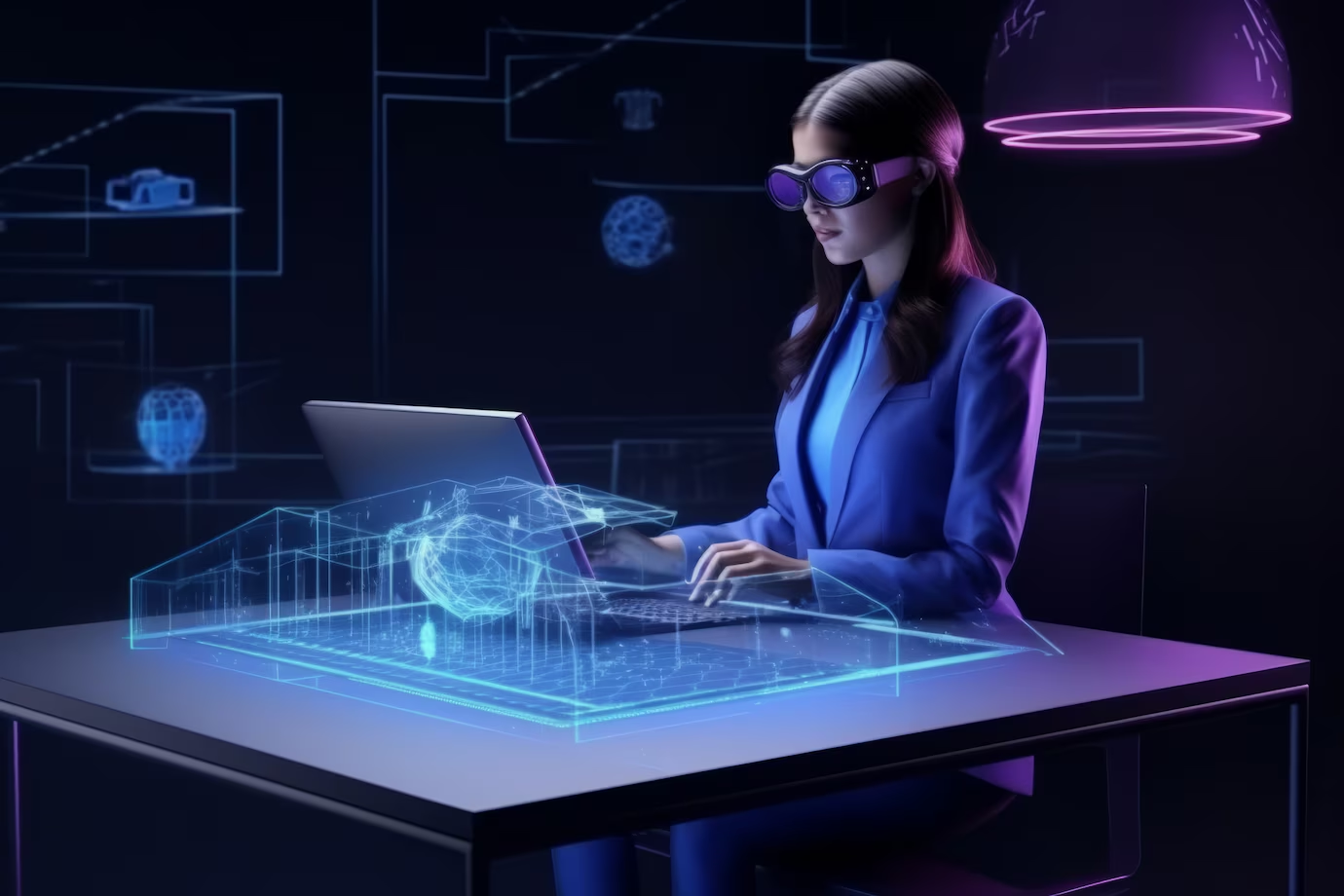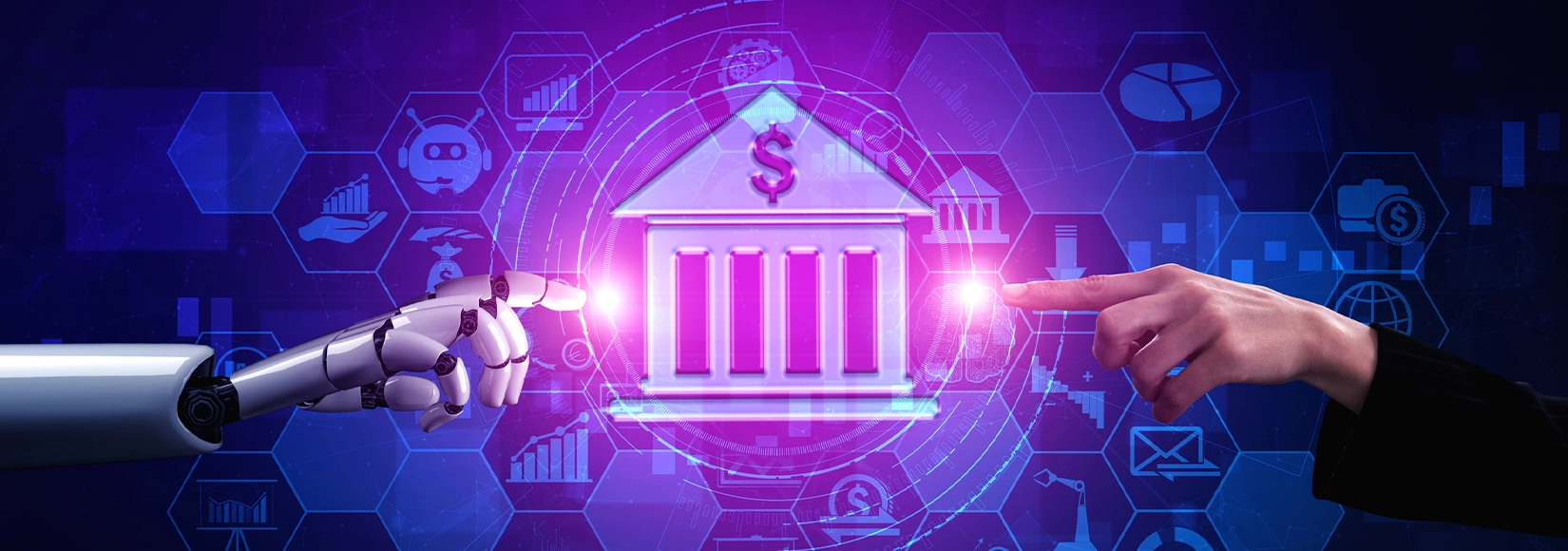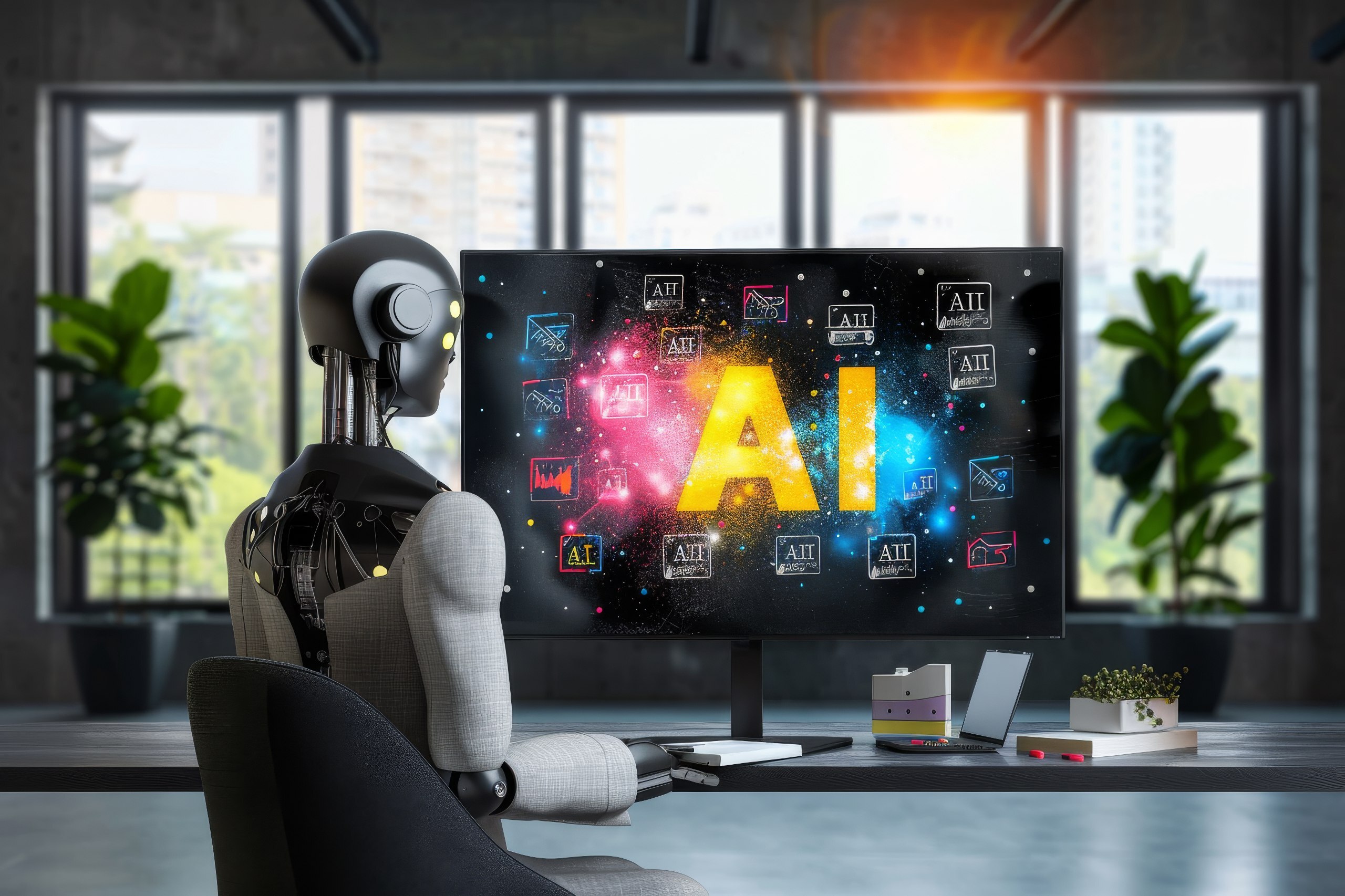Artificial intelligence is leading operations in different sectors with its groundbreaking ability of automation, which streamlines the processes. While machine learning algorithms and neural networks enable machines to learn and perform complex tasks, techniques like natural language processing (NLP) and computer vision (CV) support their work by allowing them to recognize and interpret textual and visual inputs, respectively.
So, in this article, we will dive into the details of AI’s eyesight, i.e., Computer vision, and discover its meaning, how it works, capabilities, applications, and examples.
What is Computer Vision?
Computer vision (CV) is the field of artificial intelligence that allows AI models to process and interpret visual inputs like images, videos, live video streams, etc. It enables the AI to recognize what’s in the visual input and take the required action it is trained for. A major example of computer vision is traffic surveillance cameras, which automatedly monitor the running traffic, detect and read the vehicle number plates of rule breakers, and issue fines to them.
Similarly, computer vision-backed AI models are widely used in various ways to analyze digital imagery and analyze it using deep learning algorithms to recognize, classify, and make insights, recommendations, and actionable decisions.
How Computer Vision Works?
Like all AI models, a computer vision model must also be trained with lots of data. For instance, for training a CV model to detect images of fruits, it must be fed a huge dataset of different fruit images with the reference of which the model will learn to recognize and identify different fruits.
This is achieved with the support of two technologies: machine learning and convolutional neural networks (CNN).
Machine learning is the branch of AI that uses different mathematical algorithms to teach machines the self-learning ability. In simple words, by using machine learning, machines analyze one input fruit image and automatically identify its name with the help of the training data and without the need for manual intervention or programming.
CNN is a type of neural network that excels in tasks related to image processing or computer vision. They help the CV models recognize an image by using filters to scan for patterns in different parts of an image. These patterns are combined to understand the whole picture, allowing CNNs to identify objects and faces or even classify what kind of image it is – all with impressive accuracy. Similarly, recurrent neural networks (RNN) are used for video applications to help the computer understand how a sequence of running images relates to each other.
Common Tasks Performed by Computer Vision
-
- Image Classification: Detects and classify images into different categories.
-
- Object Detection: Detects different types of objects in the visual inputs.
-
- Object Tracking: Identify and track a specific object in a captured video or real-time.
-
- Content-based image: Allows users to search, surf, and retrieve images from a large database.
Applications of Computer Vision in Different Industries
From healthcare and e-commerce to transportation and surveillance, AI is everywhere! So now, let us understand how computer vision in AI is being used around us:
Below are the applications of computer vision in different industries:
Healthcare
Medical practitioners can use computer vision in AI healthcare to analyze various medical images like ultrasound, X-ray, CT scans, MRIs, etc. This can streamline the diagnostic process, allowing the healthcare faculties to diagnose more patients per day with enhanced accuracy, thereby saving many lives.
Self Driving Cars
The concept of self-driving cars is impossible without computer vision. This technology is crucial for enabling autonomous vehicles to identify and recognize various objects on the roads, including people, other vehicles, traffic signals, trees, and traffic signs, which ensures people’s safety.
Retail & E-Commerce
Computer vision is opening new doors for retail and e-commerce platforms. For example, people can now upload images of any product (like jeans) using which the AI model can show products of a similar type and recommend the user according to their taste and type. Moreover, virtual try-ons are another innovative application that allows customers to try different products like clothes, spectacles, and makeup shades virtually, which increases their confidence in the purchase decision. This would also benefit businesses as customers would be less likely to return and exchange products.
Agriculture
Using computer vision in agriculture can help in better monitoring of the crops, which eventually leads to better yield and protection. For instance, monitoring crops can help in the early detection of diseases and yield estimation. However, drone cameras can be used to keep surveillance and capture periodic farmland images, which can further be used to form actionable insights.
Manufacturing
Incorporating computer vision into manufacturing systems would allow manufacturers to automatedly detect defects automatically, which ensures the quality, consistency, and monitoring of production lines.
Security & Surveillance
Computer vision is widely used for security and surveillance purposes as it enables 24/7 monitoring for thefts, public, and traffic control. Many municipalities have started using CV along with AI algorithms to detect any unusual or prohibited activity and issue automated challans to the rule breakers.
Entertainment & Gaming
Gesture recognition in gaming consoles, another key application of computer vision, enables players to engage with games through hand gestures. Additionally, this technology plays a significant role in advancing augmented reality (AR) and virtual reality (VR) experiences.
Environment Monitoring
Computer vision empowers satellites and drones to analyze captured imagery, tracking deforestation, pollution, and landscape shifts. This provides vital data for safeguarding our planet.
Examples of Computer Vision
Now that we have understood computer vision’s workings and applications let us move ahead and see some real-life examples.
Google Translate
Google translation services are backed with computer vision. The user can scan any text using their mobile cameras, and google can translate it to any other language. Apart from translating, Google Lens incorporates computer vision technology and can translate text in over 100 languages.
Facebook 3D Photo
The amazing feature of Facebook that turns 2D images into 3D ones using a smartphone’s dual cameras uses computer vision to perceive pictures from various angles. Using this feature, users can convert any 2D images clicked from an Android or iOS into 3D photos, no matter how long back they were clicked.
YOLO
You Only Live Once (YOLO) is a computer vision backed object detection app that was widely used in times of pandemic to ensure that people follow the social distancing guidelines. The model detects any object through the camera or visual input in real time using convolutional neural networks.
Faceapp
Faceapp is another trending app that utilizes computer vision for editing purposes. Using the face app, people can upload their current images and modify their gender, age, and other facial features. It relies on CV and DL algorithms to detect facial features like eyes, ears, cheekbones, jawline, etc in the image.
Thus, computer vision has allowed AI models to see, analyze, and interpret visual data. It is already widely used in various industries and has drastically transformed how people interact with technology. In the future, we can expect more remarkable applications and discoveries. Imagine robots running around the sectors to perform different tasks. They can see just like normal humans and perform their specific tasks accurately. This is just a glimpse of what this groundbreaking field offers in the future.
If you want to develop AI solutions incorporating Computer Vision and other such technologies, go nowhere because Build Future AI has something in its box just for you!
Email us via email at business@buildfuture.ai to discuss your idea and discover unusual possibilities to help you grow your business domains.




